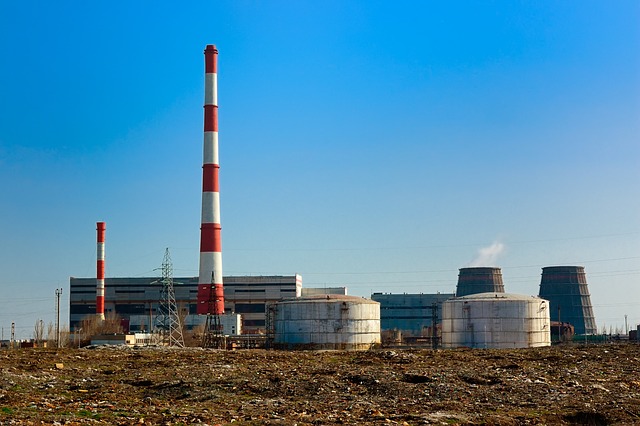As the demand for cleaner, smarter energy grows, traditional sources strain under environmental and economic pressures. Exploring innovative alternatives like solar, wind, hydrogen, and bioenergy reveals practical solutions reshaping industries and policies worldwide. Understanding these emerging energies offers insight into global trends and future possibilities, highlighting how technology and strategy combine to meet modern challenges sustainably.
Key Innovations and Trends in New Energies
To understand the benefits of new energies requires exploring the dramatic global shift from fossil fuels to renewable and emerging sources driven by economic, environmental, and policy imperatives. Governments, industry leaders, and innovators alike now prioritize sustainable power generation as world economies attempt to balance rising energy demand with commitments to climate action and decarbonizing the energy sector. This redirection is not only about minimizing emissions it’s also opening doors for robust job growth and strengthening energy security.
Topic to read : What role do UK universities play in fostering business innovation?
Several clean energy technologies have reshaped the landscape in just the last few years. Solar power innovations from advanced photovoltaic materials to greater panel efficiency are enabling wider adoption in both urban and remote locations. Wind energy advancements, both onshore and offshore, benefit from improved turbine designs delivering more power in diverse climates. Meanwhile, green hydrogen production is emerging as a flexible and clean fuel, complementing renewables and serving as long-duration storage.
The push towards Net Zero requires breakthrough strategies: integrating energy storage solutions for reliability, developing smart grids, and modifying infrastructure. International collaboration and cross-sector investments promote real progress. As industries and communities adapt, new approaches in bioenergy developments and circular economy models help cement the role of renewables in a sustainable future.
In the same genre : What Are the Latest Challenges Facing UK Enterprises?
Emerging Energy Solutions and Industry Developments
Technological innovations: solar, wind, hydrogen, and geothermal
Solar power innovations and wind energy advancements are reshaping sustainable power generation. In 2025, solar technologies use improved photovoltaic materials and tracking systems, boosting efficiency and expanding applications from rooftops to large-scale power plants. Meanwhile, wind energy advancements such as larger turbine designs and digital control are increasing both output and reliability.
Green hydrogen production is gaining attention as a clean energy technology. It delivers flexible solutions for energy storage and decarbonizing the energy sector, especially in hard-to-abate industrial segments. Geothermal energy exploration, supported by modern drilling and corrosion-resistant components, expands access to distributed energy resources for heat and electricity.
Carbon capture, utilization, and storage (CCUS) in hard-to-abate sectors
Carbon capture and storage is pivotal for industries with stubborn emissions. By integrating CCUS with energy storage solutions and hydrogen production, sectors such as cement and steel can cut emissions while supporting energy transition strategies. This aligns with international clean energy cooperation and the drive for lower carbon transportation fuels.
Developments in bioenergy, offshore wind, and next-generation nuclear power
Bioenergy developments, including advanced biofuels and integrated carbon capture, support circular economy in energy. Offshore wind projects deploy new foundations and smart grid integration for stable, high-output power. Next-generation nuclear power promises safer, efficient, and more adaptable options for future sustainable power generation.
Market Dynamics, Global Trends, and Policy Impacts
Growth of Emerging Energy Markets and International Cooperation
Emerging energy markets are expanding rapidly, fueled by both international clean energy cooperation and growing commitments to decarbonizing the energy sector. Collaborations like the Energies Coalition for Transport & Logistics demonstrate how sectors worldwide work together on solutions for renewable energy investment trends and energy infrastructure modernization. Joint efforts bridge expertise gaps and drive technological advancement in diverse regions, promoting grid-scale energy storage and sustainable power generation across continents.
Investment Trends in Renewable Energy and Infrastructure Modernization
Renewable energy investment trends reveal significant capital dedicated to upgrading energy infrastructure modernization. Companies such as Chevron New Energies focus on renewable energy sources and carbon capture and storage to meet climate change mitigation energy goals. Financing sustainable infrastructure is increasing, enabling projects in bioenergy developments, offshore wind projects, and innovative battery technologies. These investments also support the integration of distributed energy resources and encourage pioneering projects in green hydrogen production.
The Importance of Regulatory Impacts and Policy Incentives on Energy Transition Pathways
Policy incentives for clean power and robust regulatory frameworks shape the pace and success of energy transition strategies. International clean energy cooperation propels policy harmonization and encourages adoption of clean energy technologies. Carefully crafted incentives and regulations reduce risks around renewable energy investment trends, accelerate energy infrastructure modernization, and improve access to next-generation nuclear power, ensuring positive momentum in advancing the global clean energy transition.
Real-World Applications and Case Study Insights
Notable case studies: Implementation in transport, logistics, and board game industry (e.g., CATAN: New Energies)
In 2025, the energy transition strategies adopted by major consortia address both market realities and regulatory demands. The Energies Coalition for Transport & Logistics, by collaborating with industry leaders, pursues energy efficiency improvements and rapid deployment of distributed energy resources. For instance, in modern board games such as CATAN: New Energies, players experience firsthand the impacts of starting with fossil fuels before pivoting to renewable energy for agriculture and industry. This tabletop simulation underlines energy transition scenarios, echoing real market constraints.
Applications in industrial, power, and transport sectors: Insights from market leaders
Leading companies showcase grid-scale energy storage as pivotal for balancing intermittent renewable energy sources. Chevron New Energies and others integrate smart grid integration and next-generation distributed energy resources to drive carbon footprint reduction methods. Market leaders invest in energy efficiency improvements, enabling scalable solutions for decarbonizing the energy sector, from hydrogen to advanced storage.
Cross-sector cooperation and financing models accelerating sustainable power generation and energy access
Progress depends on sustainable energy financing and multi-sector partnerships. Industry alliances combine resources and expertise to expand renewable energy for agriculture and industrial settings, supporting emerging energy markets. This synergy is vital for scaling grid-scale energy storage, enabling reliable access to sustainable power generation in both advanced and developing regions.


